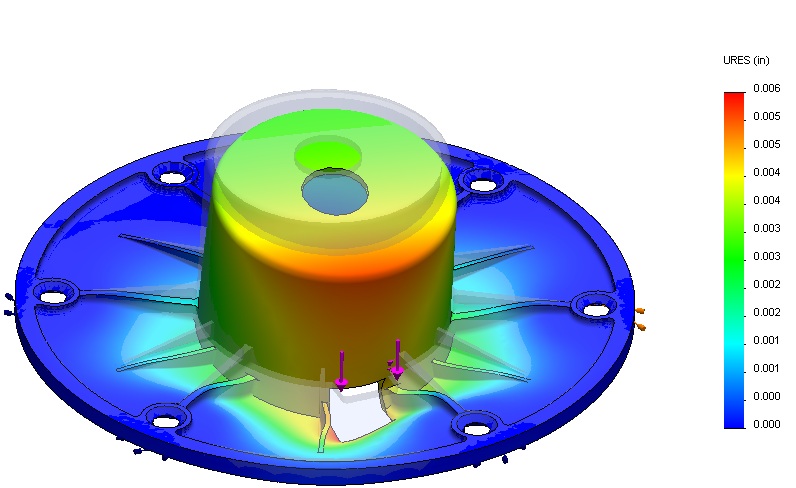Fishing and Fatigue

Fishing is all about enjoying nature. The calm serene water, calling you to sit back, relax, sun bathe while you catch dinner. Every summer weekend, Rod takes a break from rigors of work and impress on his family his fishing skills.
This seat has experienced many joyous moments, passed on wisdom, and helped create some amazing memories. The seat is mounted to the floor using a pedestal and base. On a recent trip, Rod was enjoying his beer and suddenly the base broke.
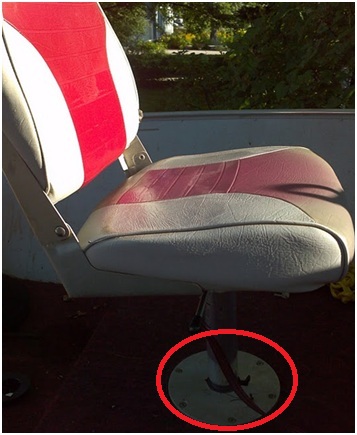
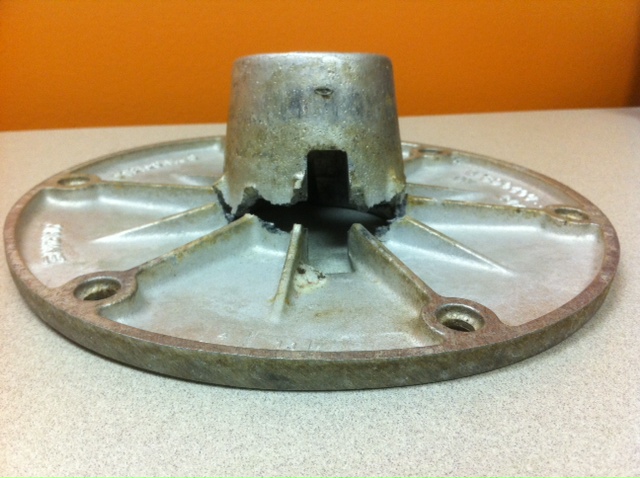
The curious engineer launched into an investigation. After some deliberation, he realized the root cause. While waiting for his bait to hook on, Rod rocks the chair. While this may not be as damaging once or twice, over time it will take toll on the base. This looked like a perfect job for SolidWorks.
It did not take long to create a 3D model. A close look at the supplier’s website gave me all necessary dimensions. Since SOLIDWORKS has an analysis tool integrated to its environment. The next step was streamlined. Few simple measurements on the boat e,g chair height, distance between base and foot rest platform and most importantly ….Rod’s weight; helped generate conditions.
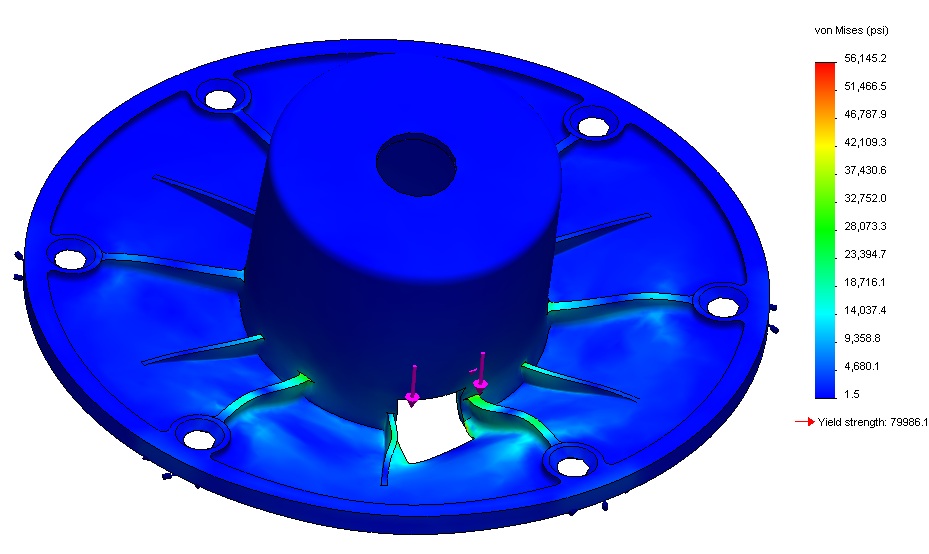
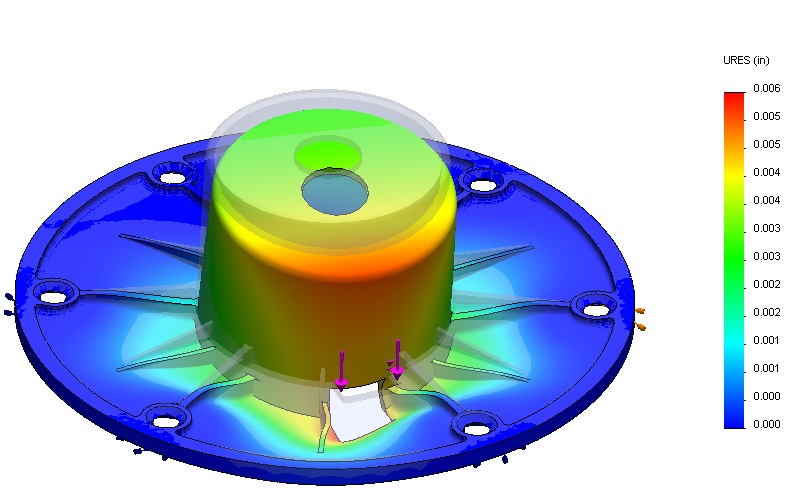
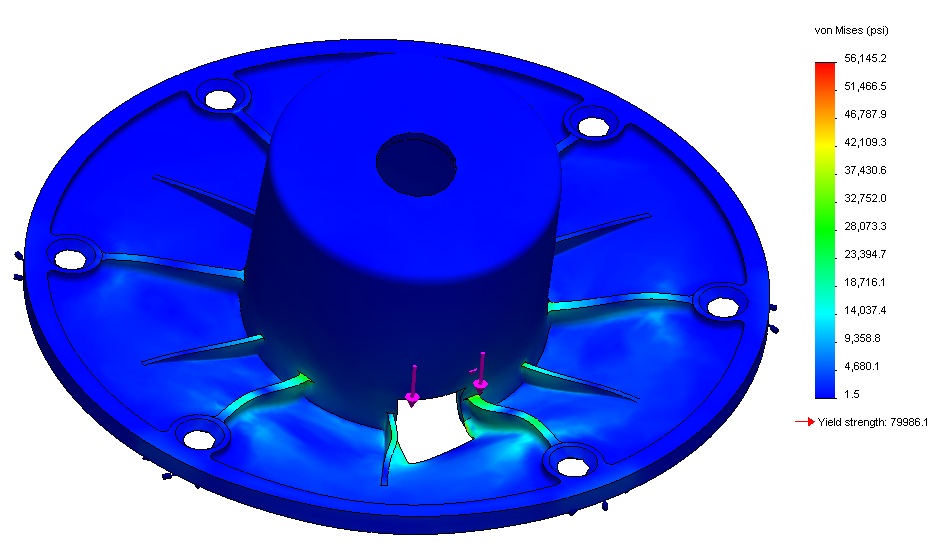
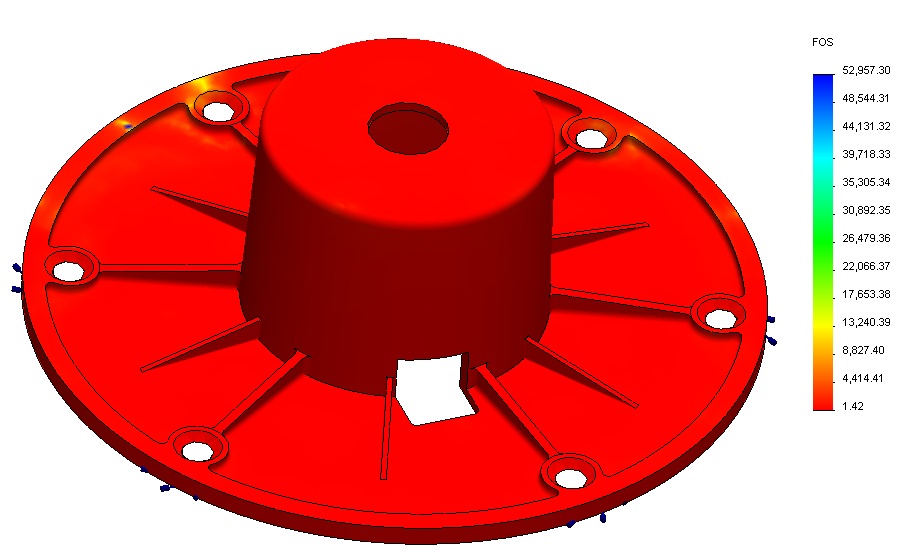
A simple analysis shows, rocking once does not generate a significant load. A factor of safety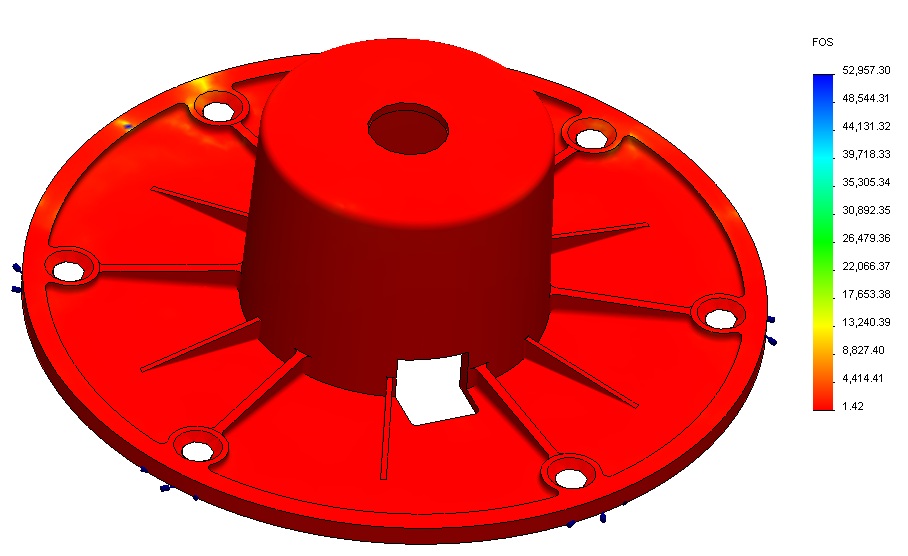
So what happened? Well over time, and in this case many years; base underwent fatigue. Fatigue is the progressive and localized structural damage that occurs when a material is subjected to cyclic loading. The repetitive habit of rocking, caused a localized damage at the notch. Each cycle of load fluctuation weakens the object to some extent. After a number of cycles, the object becomes so weak that it fails.
Failure due to fatigue occurs in three stages:
- Stage 1. One or more cracks develop in the material. Cracks can develop anywhere in the material but usually occur on the boundary faces due to higher stress fluctuations. Cracks can occur due to many reasons. Imperfections in the microscopic structure of the materials and surface scratches caused by tooling or handling are some of them.
- Stage 2. Some or all the cracks grow as a result of continued loading.
- Stage 3. The ability of the design to withstand the applied loads continue to deteriorate until failure occurs.
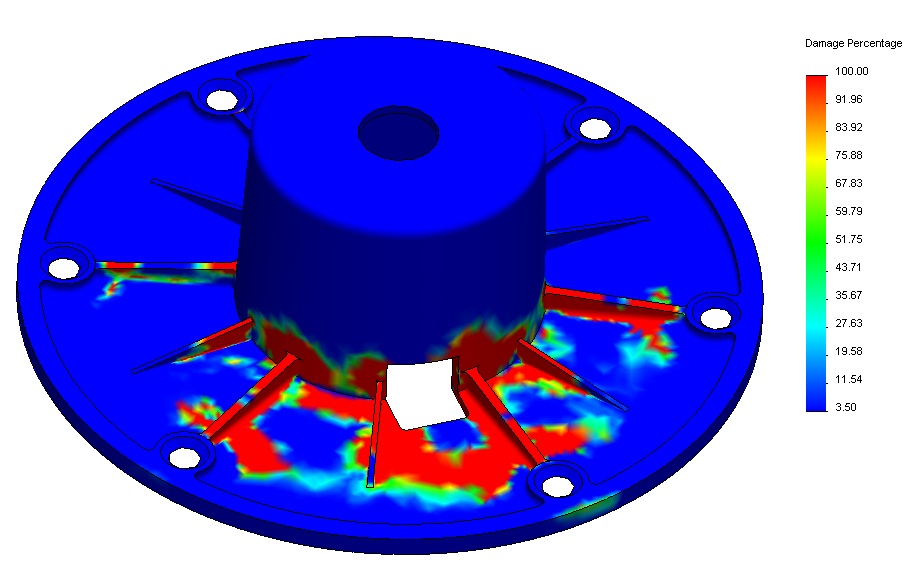
The output of Fatigue tests gives Damage percentages. The percentage cumulative damage factor or the percentage life consumed due to applied load. Rod had to rock the chair 350000 times to make the base fail.
Rod has since replaced the base and continues enjoy his passion. As any engineering investigation, my recommendations were simple….stop rocking the chair. A simple reverse calculation showed a lighter person (~ 195 lbs) would be able to rock 1 million times before breaking the base. ….Training shoes anyone??
Rajat Trehan
Product Manager – Design Validation
Computer Aided Technology Inc.

 Blog
Blog 


